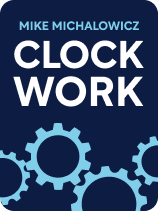

This article is an excerpt from the Shortform book guide to "Clockwork" by Mike Michalowicz. Shortform has the world's best summaries and analyses of books you should be reading.
Like this article? Sign up for a free trial here.
What is the most effective way to train new employees? How can you ease new hires into their roles faster and more effectively?
Taking the time to develop an efficient training process for new employees will help them settle into their roles faster so they can start making meaningful contributions to the company. As a rule of thumb, it’s best to show rather than tell when training new hires.
Here are some tips for how to train new employees faster and more effectively.
How to Develop an Efficient Training Process
Typically, entrepreneurs train employees by writing a manual and assigning employees to read it. However, writing a manual is overly time-consuming. So, want to know how to train new employees more efficiently?
(Shortform note: Although creating a written manual is a time-consuming effort, it may still be worth the effort: Research suggests that people comprehend and remember more when they read information versus when they acquire it through audio or videos. There are two main reasons for this. First, when you physically hold and flip through written content, your brain connects what you read with where it was on the page. This connection increases your retention of information. Second, people associate audio and video engagement with social media, so they tend to consume it in the same way they consume social media: quickly and with only surface-level engagement.)
To design a more efficient system for training new employees, the author recommends you save time by recording tasks while they happen in real-time. For computer-based tasks, use screen-recording software and voice narration to explain the steps of the task as you or an employee completes it. For other tasks, make a video of yourself or an employee completing it, and narrate its steps.
(Shortform note: How can you ensure your training videos are effective and engaging? First, at the beginning of each video, share exactly what the trainee will be learning. This step helps you clarify the topic of your video, making it more likely you’ll skip sharing unnecessary information. Second, focus your trainees’ attention and help them organize their knowledge by breaking long training videos into short, three-to-five-minute mini-videos. Each mini-video should have its own subtopic and goal.)
| Post-Training Evaluation An additional step in the training process that Michalowicz doesn’t mention is determining a way to assess if and how well your trainees learned the required content. Assessing their learning will allow you or the person training them to notice and correct any misunderstandings before they jeopardize their work. Assessing employees’ learning will also reveal any issues with the training, enabling you to improve it for the next trainee. One model for assessing corporate training proposes you assess the following factors after an employee completes their training: Their emotions. Ask them to share what aspects of the training left them feeling prepared for their role and which aspects could’ve been better. Their takeaways. Ask them to share what aspects of the training felt most important. Their application. Three to six months after an employee completes their training, observe them to assess how well they apply their takeaways on the job. The company’s outcomes. When you have enough data on your company’s outcomes (such as your number of sales), compare these data to data from before you implemented the training. This comparison reveals whether the training had a positive, negative, or neutral impact on the quality of employees’ work. |

———End of Preview———
Like what you just read? Read the rest of the world's best book summary and analysis of Mike Michalowicz's "Clockwork" at Shortform.
Here's what you'll find in our full Clockwork summary:
- How you can take a four-week vacation as a small business owner
- How to avoid burnout as an entrepreneur
- Why a hands-on approach to leadership is usually not the best method






